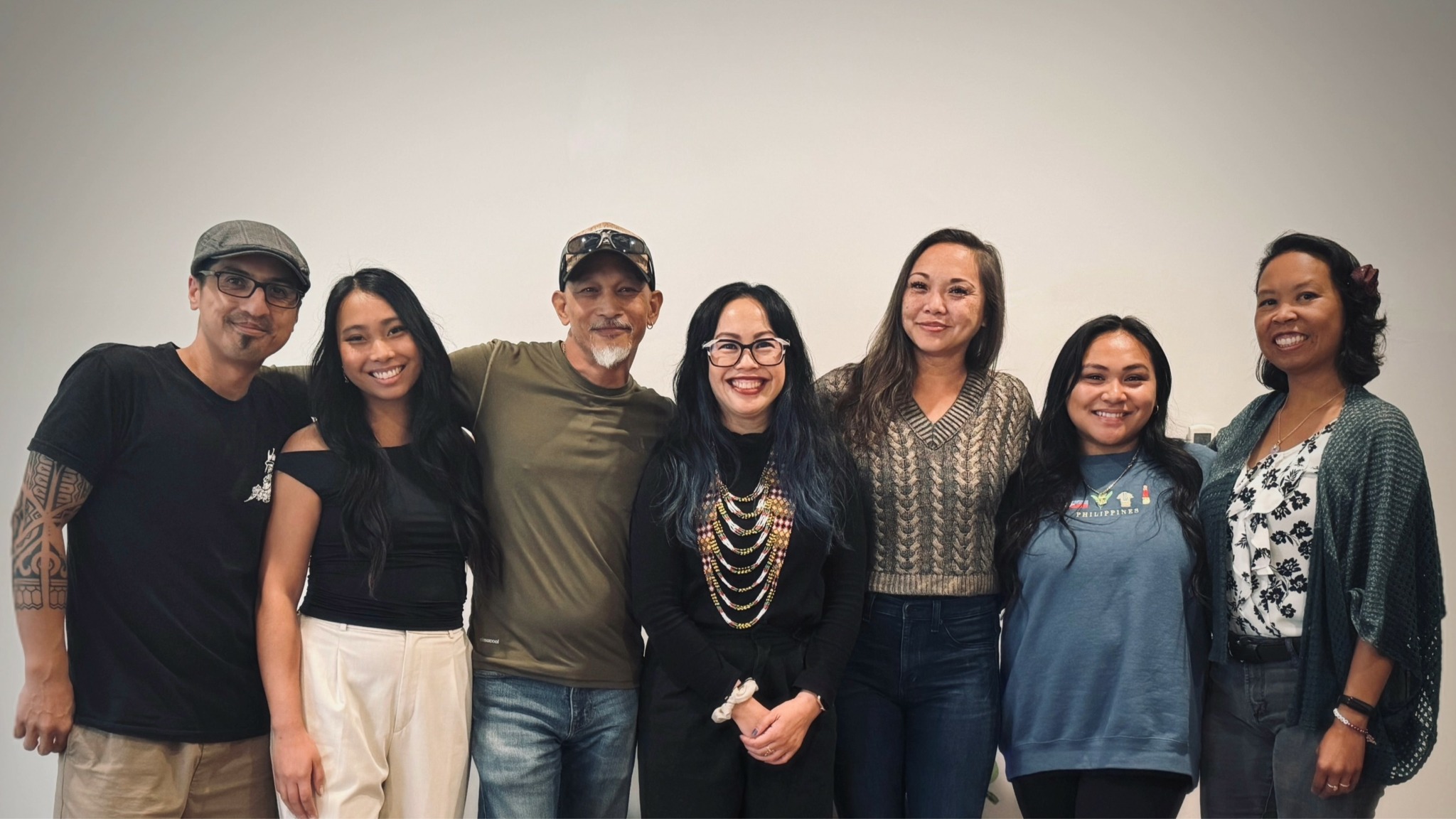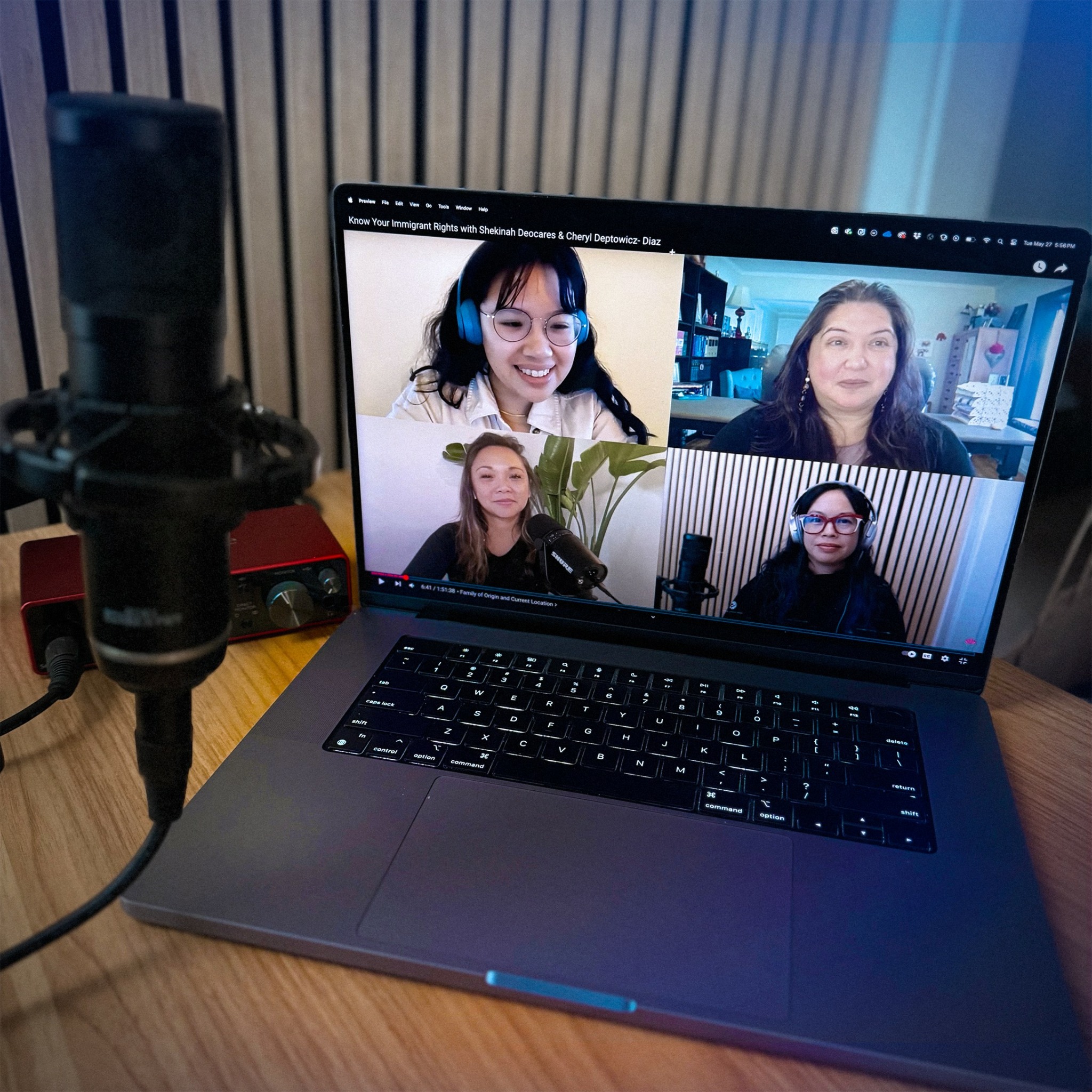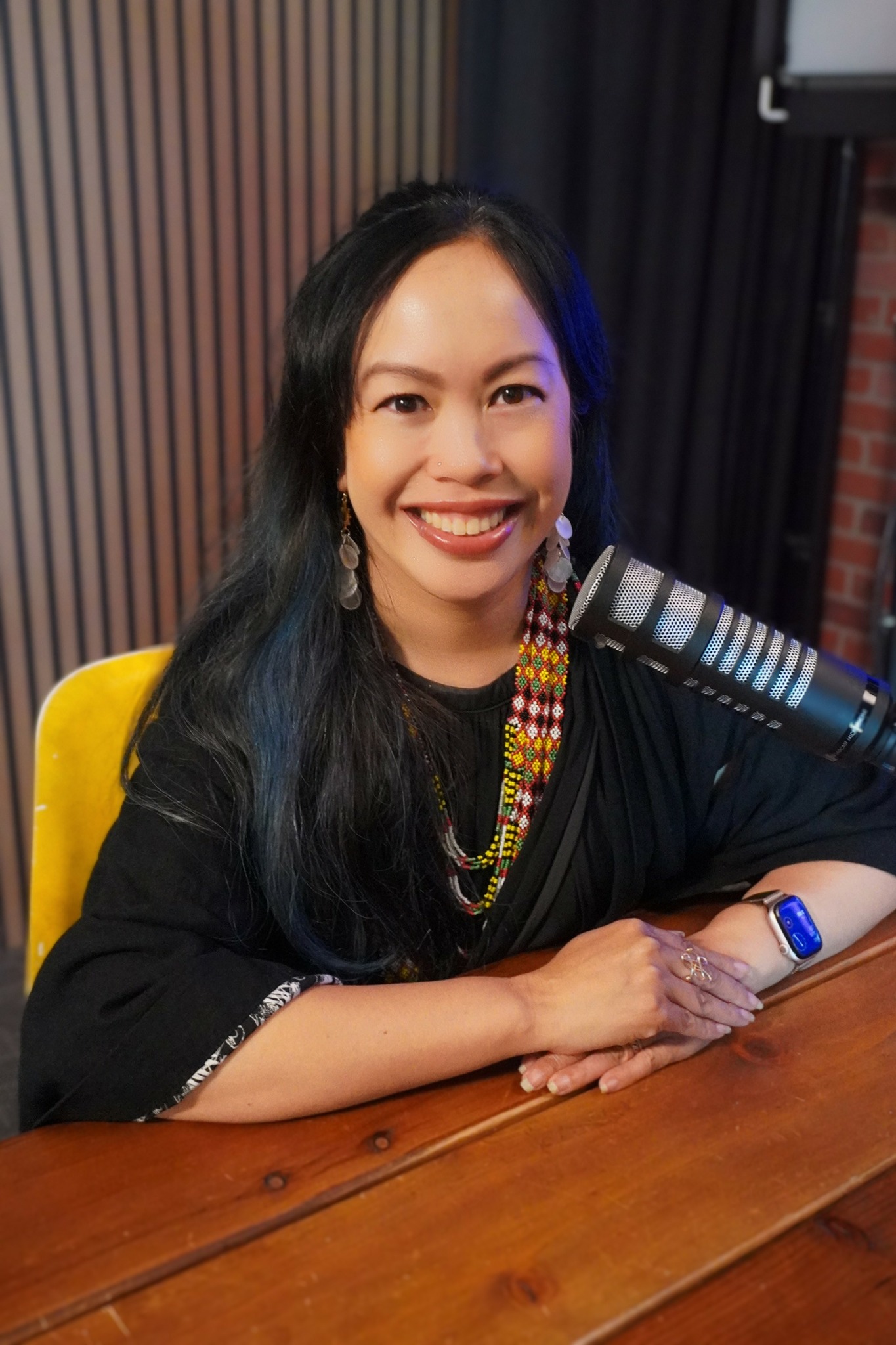We recently connected with Cheryl Samson Ramirez and have shared our conversation below.
Cheryl, thanks for joining us, excited to have you contributing your stories and insights. Can you talk to us about your team building process? How did you recruit and train your team and knowing what you know now would you have done anything differently?
The Pilipinx in Wellness podcast is a tiny, but mighty team of 7 members. We all volunteer our time and energy for FREE with the hope of building a successful Filipino/Pilipinx health and wellness global resource hub and podcast. It was not always a team of 7 members.
When we first launched in April 2021, Pilipinx in Wellness was co-founded by both myself, a Licensed Clinical Social Worker, and Riann De Los Reyes, a Registered Nurse and Health & Wellness Consultant with the support of CEO & Founder of SoCal Filipinos, Jason Lustina. Our Creative Lead has always been my spouse, Ritchie Ramirez, from its foundation. We acquired Kathleen “Kat” Torio via SoCal Filipinos, as a volunteer who expressed interest in our podcast. Kat has held multiple roles throughout her time on the podcast from co-host to tabling at events with me, to behind-the-scenes design and production work, episode editing, and now balances two roles, as our Development Coordinator and Social Media Strategist. Kat created an interest form that we shared at community events we tabled at and via our Instagram account for the additional positions that we were seeking in our expansion: Co-hosts, an Outreach Manager, and a Video Editor to help me transition into production/operations. From there, we interviewed and acquired: Sheena Katz and MarKing (our Co-hosts), Maya Custodio, our Outreach Manager, and Harmonie Tangonan-Kwan, our Video Editor. All of them are knowledgeable and very talented in their roles and what they uniquely add to the podcast. They are also different in their backgrounds, experiences, and strengths, which I think makes our podcast team both well-balanced and dynamic. All of the interviews that we conducted were on the phone and held virtually online. I don’t think there is anything that I would have done differently, as I remain grateful for what each member brings.


Awesome – so before we get into the rest of our questions, can you briefly introduce yourself to our readers.
Our Vision: Pilipinx in Wellness envisions a world where culturally-rooted wellness is accessible to all, activating the diaspora and beyond to maintain health, connection, and collective healing.
Our Mission: Pilipinx in Wellness centers culturally-rooted health and ancestral healing within the Filipino/Pilipinx diaspora and its allies. Through accessible tools, conversations, and community partnerships, we invite individuals to reclaim health & wellness practices that honor identity, heritage, and holistic balance.
I am a Licensed Clinical Social Worker who holds a day job within public education. My pronouns are she/her/siya. I am a child of immigrants whose lineage is from Mindanao on my mother’s side and the Bisayas on my father’s side, both from the Philippines. I am blessed and honored everyday to be born, raised, live and work on the unceded lands of the still living Tongva and Gabrielino people. My mother is half-Chinese, so culturally that plays a role too in my health and wellness journey. Since I do not actively work within the scope of practice of my professional licensure, I navigate the podcast with some of the strengths that I have acquired through my training: the art of listening, asking questions to dive deeper, as any therapist would, and sharing resources like a true social worker. I also have found it rewarding to apply the knowledge that I’ve gained from my reiki training under Atasiea Kenneth L. Ferguson, my 2oo hour yoga teacher training with Shivakali Yoga, and share the additional resources from my own health and wellness practitioners that I have worked with throughout the years in my own healing journey. The podcast features a combination of all of this along with community referrals that I receive from featured guests, musicians/artists, and community members that I meet along the way. They have also come through our partnership with Therapin*y (www.therapinay.com), a global directory of therapists & healers for Filipina/o/x people.
I have sought inspiration from health educator, community organizer & activist and policy advocate, the late Soraya Medina, and her work throughout Los Angeles. I have also been inspired by Chelsey Luger and Thosh Collins of Well for Culture and their approach to revitalizing and reclaiming health and wellness for indigenous communities. Instagram accounts like, The Nap Ministry, has also inspired our work amongst the many accounts that we follow and repost throughout our global diaspora.
From years of community organizing, youth organizing, and working within public education, I have experienced burnout. In reflection, I have learned that not only myself, but countless others have walked a similar path of prioritizing the needs of others without refilling our own cups or facing our own intergenerational trauma. You don’t have to be Filipino/Pilipinx to relate to this experience. I saw that there was not a central space for health and wellness within our community and I felt that prior to allyship, it was important to start with the unique challenges that I faced as a Chinese/Filipina American and that of our global diaspora. In knowing ourselves and facing our own trauma head on, can we begin to help heal and relate to other communities with similar experiences. All the providers that I sought for my own health and wellness existed in silos, yet the resources were endless. I saw myself surrounded by so many knowledgeable and skillful healers and wellness practitioners. It was time to share and center them. This is how Pilipinx in Wellness was born.
Pilipinx in Wellness also exists to address the multiple layers of intergenerational trauma and healing needed, as a result of a global diaspora that was formed out of socioeconomic survival and political upheaval impacted by years of imperialism, colonization, wars, and foreign military presence. We still experience the effects of this both currently and long-lasting, but we don’t have to continue navigating within the pain and trauma. Pilipinx in Wellness exists to help our community AND our allies heal, remain safe, and vigilant for many generations to come. Through storytelling and resource sharing, we hope to inspire others to heal and find wellness within themselves.


Let’s talk about resilience next – do you have a story you can share with us?
I am a descendant of warriors, healers, and immigrant parents who were raised by single mothers. Both of my parents were raised during World War II and experienced the loss, poverty, and industrialization that followed. During martial law, under former President Ferdinand Marcos, my father sent my mother first to immigrate to Huntington Park, CA and followed while under house arrest after being detained due to political dissent. These, coupled with discriminatory experiences of moving to a new country are a part of the accumulated life experiences that shaped both my older brother and I in our upbringing. Our parents also instilled the Filipino values of being resourceful, hardworking, resilient and adaptable.
The Pilipinx in Wellness podcast reflects also being birthed in the most challenging of times. It is one of the reasons why our logo is a lotus with the same colors as the lotus that grows in Lake Sebu, located in Mindanao, where my mother is from. The lotus grows from muddy waters and is often associated with overcoming adversity, serving as a symbol of hope for health & wellness, not just in our global Filipino/Pilipinx diaspora, but also for all oppressed people worldwide. It was started a year after my father died, at the height of the Covid 19 pandemic when many of us, including myself were experiencing direct grief and loss, while our Filipino nurses were working on the frontlines in hospitals, and at the same time, our community was under attack by widespread Asian hate crimes. We made a choice in April 2021 to not be victims of circumstance, but to rise from these challenges and give our community what was needed, a platform to talk not only about the root of our intergenerational trauma, but the resources to work towards being healthier, safe, and well. I decided to transform my grief, my loss, and my pain into something that we could all collectively benefit from and heal from together in dialogue, storytelling, and knowledge-sharing. In the same way that our ancestors passed down our customs and practices through traditional oral narration that can be documented for generations to come.
This is not only my origin story, but also the origin story of Pilipinx in Wellness. Our lotus logo does not represent just my own resilience, but the resilience of our diaspora for generations to come.


We’d love to hear the story of how you built up your social media audience?
I am still in awe of how our social media presence continues to grow. One of the challenges that we face is having “Pilipinx” in our name. I know not everyone subscribes to using the term “Pilipinx”. Not everyone believes in or accepts the non-binary term. Not everyone spells Pilipino with a “P”, but we retain the name because it represents our inclusivity. The awareness that we have that our community is both diverse, multi-layered and complex. This is what also makes it beautiful and prioritizes the importance of making sure that all voices are heard, even those in our global diaspora that are marginalized.
This context is important to share because it shapes how our social media audience was formed. We follow and include health and wellness practitioners and organizations globally from various disciplines and walks of life. Even the ones not always thought about, yet contribute to the dialogue and definition of what health and wellness looks like throughout our diaspora and global network. As we follow people, they in turn, follow us. As we invite our various guests, some of them bring their following onto our platform. For some of our audience, it’s important to be physically present at community events whether tabling, attending, or facilitating a workshop. Partnerships and collaborations are also critical to growing your audience. Using reels, stories, or posting short clips, also help with reach. Hashtags, inviting collaborators and existing on multiple platforms also help to expand your reach. Inviting “influencers” that align with your values can also contribute to social media growth. What’s most important to us and not always popular on social media is being honest with our community and making sure that we’re sticking to our vision and mission of providing safety, health, and wellness to our global diaspora. I believe that, that has also helped too.
Contact Info:
- Website: www.pilipinxinwellness.com (coming soon!)
- Patreon: www.patreon.com/
pilipinxinwellness/membership - Ko-fi: ko-fi.com/
pilipinxinwellness - Instagram: www.instagram.com/
pilipinxinwellness - Facebook: www.facebook.com/
pilipinXinwellness/ - Youtube: www.youtube.com/@
PilipinxinWellness - Other: Threads: www.threads.com/@
pilipinxinwellness


Image Credits
Ritchie Ramirez & Harmonie Tangonan-Kwan


